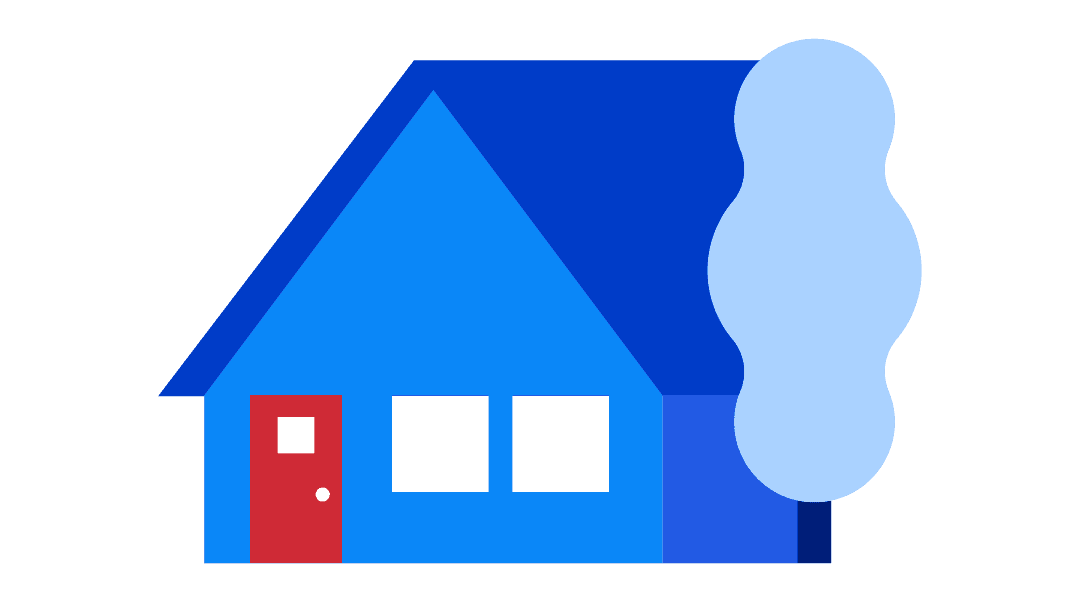4-min read

Becoming a homeowner is a big milestone in your life — whether you’re in the market for your first home, relocating for a job, downsizing as an empty-nester, or looking to buy a home as an investment property.
But what type of mortgage will work best for you depends on a lot of factors. Given the mortgage-rate environment lately, many buyers are looking into options like adjustable-rate mortgages.
What is an adjustable-rate mortgage (ARM)?
As the name suggests, an adjustable-rate mortgage, or ARM, features a rate that adjusts periodically, usually yearly or even monthly. Typically, the initial interest rate and monthly payments are lower than a fixed-rate loan, but rates could go up or down after the introductory period ends.
The fixed-rate period for an adjustable-rate mortgage is usually five, seven or 10 years. For a 30-year 5/1 ARM, for example, the borrower has an introductory rate for the first five years and after that it changes once a year for the remaining 25 years of the loan. For a 30-year 10/6 ARM, the introductory rate lasts for the first 10 years and then is subject to change every six months for the next 20 years.
The way that the loan changes is based on a particular index plus a margin set by the bank. The index is an interest rate that reflects market conditions, and changes as the market changes. The margin is a number of percentage points that your lender adds to the index. This index-plus-margin becomes your ARM interest rate after your initial rate period is over. While the index can vary, the margin does not change over the life of the loan. It’s also important to know that most ARMs have caps that limit how much the interest rate and/or payments can rise per year and over the life of the loan.
What is a fixed-rate mortgage?
A fixed-rate mortgage has a rate that doesn’t change over the life of the loan. As a borrower, your interest and principal remain the same each month, though other factors, like homeowners insurance and taxes, could result in slightly different monthly payments.
It is the most popular mortgage loan option in use today, partly because it provides financial predictability even with fluctuations in the market.
There’s a lot to consider when selecting which mortgage is right for you.
Let’s get you closer to your new home.
Are you ready to start taking steps toward a new home? If your answer is yes, get an estimate of what you may be able to borrow in just a few minutes or connect with a mortgage loan officer about your mortgage options.
Pros of an adjustable-rate mortgage
- ARM: The big pro for an ARM is that it can offer you more buying power amid rising housing costs. For example, if the yearly interest rate for an ARM is a percentage point lower than a conventional fixed-rate mortgage that could mean hundreds of dollars of savings each month.
- When is an ARM a good idea? It’s particularly good if you expect to sell your home or refinance before the fixed term ends and you can handle any rate increases in the meantime. It’s also good if you can take advantage of the lower introductory rate by making additional payments to your principal.
Pros of a fixed-rate mortgage
- Fixed-rate mortgage: The big pro with a fixed-rate mortgage is the predictability of having a rate that won’t change regardless of market fluctuations. But that may come with higher upfront costs.
- When is a fixed-rate mortgage a good idea? A fixed-rate mortgage is better if you plan to be in your home for a long time or if interest rates are low. Also, if a small rate increase would add stress to your budget, then this is a better option for you.
Key differences between ARMs and fixed-rate mortgages
- Margins: With an ARM the margin laid out in your loan documentation will not change over the life of the loan. And, because it’s a percentage added on top of the index rate, the rate you pay will never go below the margin.
- Rate caps: How much your interest rate rises or falls with an ARM is often capped both for a single adjustment period and for the life of the loan. So, your rate may not change exactly as the market changes if you reach your cap.
- Interest rates: Depending on your lender, ARMs could be lower than fixed-rate loans, at least for a few years.
- Debt-to-income ratio: You can calculate your debt-to-income (DTI) ratio by adding up your monthly bills and dividing that by your income. Most lenders look for a lower DTI ratio, but if yours is a bit higher, you might have an easier time qualifying for an ARM instead of a fixed-rate mortgage.
For both fixed- and adjustable-rate mortgages, you can refinance your home to secure better loan terms, though refinancing can come with closing costs.
Related topics

Compare mortgage options and rates.


